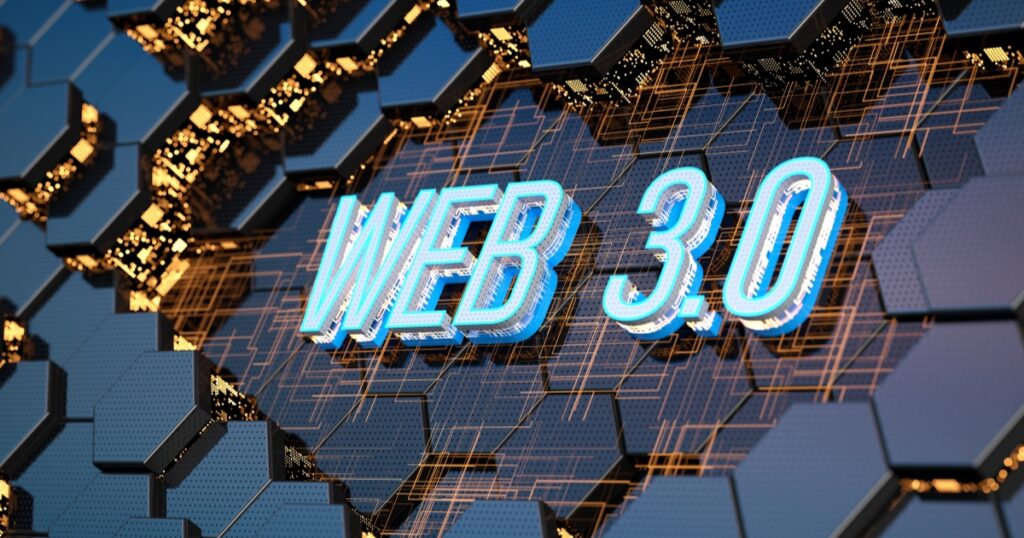Web 3, the successor to the internet infrastructure Web 2.0 is not only fascinating but also confusing for many. It is essential that all the myths/misconceptions are busted and that you understand the reality. You must know the genuine nature of this technology and also learn how it can help you. In this blog, we will unravel the various myths related to the third generation of the World Wide Web and also know what benefits it can provide to the users.
The True Nature of Web 3
Web 3 is a decentralized ecosystem based on the blockchain. Here, applications and platforms are not owned by a central entity like Web 2.0 but by those who earn their ownership stake by contributing to the development and maintenance of these services.
The foundational technologies that drive Web 3 are the following:
- Blockchain: You can consider it as the backbone of Web 3 that ensures immutability, transparency, and security. The information is usually stored across a distributed network of computers that eliminates the risk of single-point failures.
- Decentralization: Web 3 breaks away from the centralized model aiming for a more user-centric and democratic internet. The main intention is to reduce reliance on central authorities and encourage a peer-to-peer network.
- Digital Assets: It also introduces the concept of digital ownership that allows users to truly own and control your digital assets. This change is a challenge to the conventional idea of digital ownership.
- Smart Contracts: Self-executing contracts automate and enforcement terms of an agreement without the need of a mediator. This not only ensures greater efficiency but also reduces the chances of fraudulent activities.
Debunking Some of the Popular Web 3 Myths
Some of the popular web 3 myths that often circulate around are as follows:
-
Web 3 is Only Meant for Crypto and Finance
The truth: Though Web 3 has found notable applications in cryptocurrency and finance that includes Ethereum, Defi, Bitcoin, NFTs etc, its use is extended far beyond. Due to its creativity and uniqueness, it can easily create decentralized applications in multiple domains like social media, education, identity, governance, gaming, and healthcare. It is not limited to a single industry but prospers based on the vision and creativity of developers and users.
-
Web 3 is Only Blockchain Technology
The truth: Though blockchain is essential in Web 3, it is not synonymous. There are multiple technologies used such as peer-to-peer networking, decentralized apps, distributed file storage. All of them work together for a more decentralized internet experience.
-
Web 3 is Too Complex and Technical
The truth: You can consider this as another misconception that suggests Web 3 is complex and technical. Though there are critical concepts involved in Web 3 like smart contracts, cryptography, and consensus mechanisms, you need not be an expert to participate in it. There are user-friendly tools and platforms like SDKs, APIs, frameworks, wallets, browsers, that make it accessible without digging into the complex details.
-
Web 3 is Not Environmental Friendly
The truth: Early blockchain networks like Bitcoin faced environmental criticisms due to power consuming Proof of Work. But the latest Web 3 technologies employ alternatives like Proof of Stake in a sustainable effort for energy efficiency.
-
Web 3 is Slow and Inefficient
The truth: Though initial blockchain implementations may have been inefficient and slow, the latest technologies and protocols bring much needed improvement on how quickly and efficiently Web 3 systems can operate. For instance, Layer 2 Solutions enable cheaper and faster transactions on blockchain networks. The possibilities for fast and efficient Web 3 systems are showcased by projects like the high-performance blockchain like Solana and the layer-2 scaling solution for Ethereum known as Polygon.
-
Web 3 is Similar to the Metaverse
The truth: Though both Web 3 and Metaverse share focus on decentralized digital environments, are not identical. While the Metaverse denotes an immersive virtual reality, the Web 3 has a diverse range of technology for a user-centric and decentralized internet.
-
Web 3 is the Last and Ultimate Version of the Web
The truth: This is one of the biggest misconceptions that surrounds Web 3. Though there are big improvements in this version of the world wide web, the current web isn’t obsolete by any means. Both Web 3 and the current web can coexist and complement one another. This form isn’t the end but the beginning of a new and fun chapter in web’s history.
The Biggest Benefits of Web 3
Now that some of the myths about Web 3 have been busted, you must know more about the benefits offered by this form of web. With time, Web 3 will continue expanding in terms of user-friendliness and in new areas. This form of web follows a different path compared to web 2 and gives priority to massive amounts of data.
As a result of decentralization, increased connectivity, and permissionless access, Web is arguably superior to the existing web system. Some of the main benefits provided by this unique technology are as follows:
-
Enhanced Data Operations
Due to the decentralized information storage, users can have access to data under any kind of circumstance. There are multiple backups to assist the users during problems like a server crash. Encryption can also help users the most when it comes to data security.
-
Much Better Search Engine Optimization
Web 3 helps utilize search engines in a natural language that is quite efficient. Businesses can optimize their websites in a highly organic way instead of going the usual and complex keyword strategy route.
-
Greater Reliability
Web 3’s version of the internet is said to be more stable due to its decentralized design. Such a design can eliminate the possibility of any failures. Decentralization will lead to storing all data on multiple nodes. This will ensure that users don’t have to bother about cancelling any account or service outages caused by technical or other relevant problems.
-
Transparency and Personalization
Decentralized web allows users to access the site’s source code and monitor the data. All stakeholders will be aware of the value and company that they are partnered with. As AI and NLP allow websites to detect user performance better, they also offer a more customized surfing experience.
-
A More Thriving Creator Economy
The emergence of Web 3 has led to a brighter prospect for every content developer. There are many content producers who are unable to realize the value of their work due to the various routes used by intermediaries to reach their audience. Some of the capabilities like tokenization can prove to be advantageous for the authors.
-
Standardized Collaboration
Web 3 is powered by the Decentralized Autonomous Organization, a unique management structure that has no boards and CEOs. The DAOs function as per smart contracts that enable an increased number of participants. In the next 10 to 15 years, it is predicted that many conventional businesses will opt for DAO.
What Are the Most Important Features of Web 3?
The top features of Web 3 technology are as follows:
-
Decentralization
The development of decentralized networks is a top characteristic of Web 3. Both distributed and decentralized networks are an essential part of the Web 3 framework that allows users to exchange or trade data without intermediaries, lack of ownership or without compromising user privacy.
-
Redefined Data Ownership
With the help of Web 3, users can market their data over decentralized data networks. This guarantees that they retain complete control over their data. High-powered electronic resources like PCs, smartphones, cars, appliances, and sensors can generate the information.
-
Dependency on AI
AI or artificial intelligence can be considered as the second most important technology driver for Web 3. AI has modernized to the point that it can make relative, proactive, and useful predictions/judgements. Most of the top Web 3 features are powered by AI.
How Does Web 3 Work?
The main concept behind web 3 is to make your internet searches more quicker, simpler, and efficient. This will allow systems to process even the most complex search queries in less time. Users must engage with a web 2 application’s front end, that connects with the backend , which ultimately interacts with its database. The complete source code is maintained on concentrated servers and sent to customers through internet browsers.
Wrapping Up
Web 3 is more than just hype, it is a big leap towards how well we can use the internet. Web 3 benefits outweigh the common myths that surround it and there are many things to appreciate about it. Though there may be some challenges, the various benefits such as greater security, ownership, and personalization features make it a powerful evolution of the current web system. As its technology continues to evolve, many businesses and owners will gain a lot from its capabilities across various industries.

